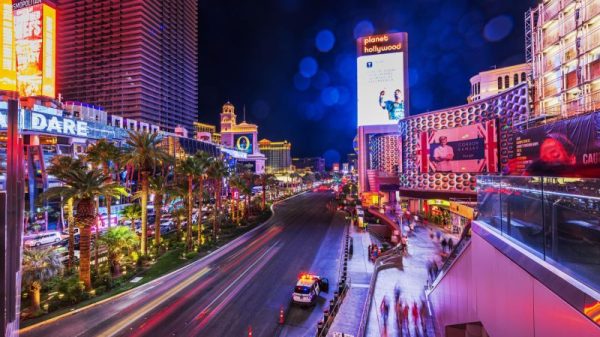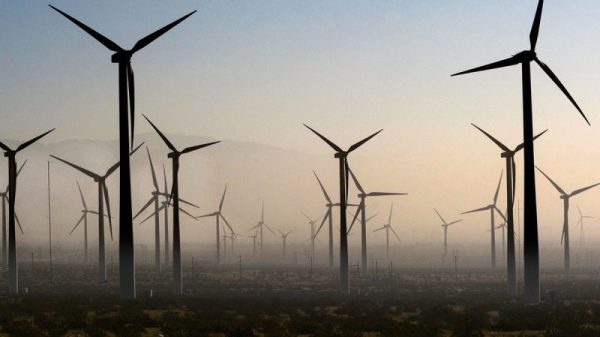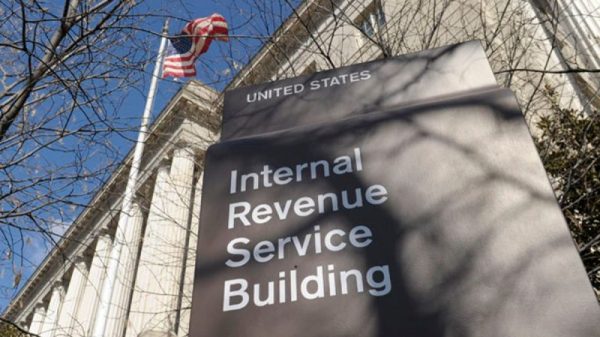Forget Italy’s most famous active volcano, Mt. Vesuvius, which destroyed Pompei in 79 AD.
The most dangerous volcanic threat in Italy right now is one you’ve probably never heard of: Campi Flegrei, or the Phlegraean Fields.
This unassuming plain, which stretches 200 kilometers (125 miles) under the bay of Naples and the islands of Capri and Ischia to the outskirts of the city of Naples, is a giant caldera, or depression, left by a supervolcano some 2 million years ago.
It is now the site of multiple volcanoes that have been active for 39,000 years, many of which lie underwater. It’s also populated with villas, small villages and shopping malls and home to 800,000 people and a hospital under construction. More than 500,000 of the locals live in what Italy’s civil protection agency has deemed a “red zone,” an area encompassing 18 towns that’s at highest risk in the event of an eruption. An additional 3 million residents of Naples live immediately outside the eastern edge of the caldera, according to the civil protection agency.
The last major eruption of Campi Flegrei was in 1538, and it created a new mountain in the bay. Seismic activity in the area has been intensifying since December of 2022, according to Italy’s National Institute of Geophysics and Volcanology (INGV), and experts fear that the volcano could be reawakening after generations at rest.
The densely populated region, which is less than 50 kilometers (31 miles) from Vesuvius, is prone to a seismic phenomenon known as bradyseism, defined by cycles of uplift and gradual lowering of the ground. The last time the region saw such activity was 1984, when the ground rose 3.5 meters (11.5 feet) before it began a slow descent accompanied by seismic activity similar to what is happening in the area now.
Currently in a state of positive bradyseism, when the ground moves upward, the entire volcanic zone is also experiencing a surge in earthquakes that has rattled nerves and sent residents seeking safety out into the streets. In September, the strongest earthquake in 40 years struck the region, and that 4.2 magnitude quake was followed by one of a similar strength just days later.
So far in 2023 Campi Flegrei has recorded more than 3,450 earthquakes, 1,118 of which occurred in August alone. This is more than triple the previous year’s total, according to INGV’s data. More than 500 earthquakes occurred in October, the strongest of which hit 4.0 magnitude, followed by a dozen aftershocks.
Until the beginning of May, the quakes were almost all under 3.0 magnitude, according to INGV.
Many experts think the local population should be better prepared to cope with the seismic activity and the possibility of an eruption. On October 5, the country’s civil protection agency laid out an updated evacuation plan, which calls for the movement of half a million people over a 72-hour period of time on roads many locals fear won’t accommodate such intense traffic. The last time a such a plan had been studied was in 2019, and the findings showed the evacuation plan was lacking.
Carlo Doglioni, head of the INGV, gave testimony on the potential outcomes of the seismic activity before the Italian government’s Environmental Commission’s lower chamber on September 28.
“There are two possible scenarios relating to the evolution of the situation in the Campi Flegrei: the best is that the ongoing bradyseism crisis ends as happened in 1983 to 84; the worst is an eruption similar to that of 1538,” he said.
“It is an evolution that we do not know and that we are monitoring,” Doglioni said.
What’s behind the increase in activity
Dr. Giuseppe De Natale, a research director at the INGV in Naples, said the current cycle of uplift is associated with pressure below the surface of the caldera. “We don’t know exactly the depth of the increase of pressure, it could be between zero and 3.5 kilometers,” he said.
There are two hypotheses as to what could be causing the current increase in seismic activity at Campi Flegrei, according to De Natale.
The first — and potentially most dangerous — possibility is that it could be an “intrusion of magma coming from the magma chamber located about 8 kilometers deep,” De Natale said.
The second, which he said is more likely, is that there is a large “degassing” of gases created by the magma coming from the deep magma chamber. The degassing at the same depth as the magma chamber is what he believes has caused the ground to rumble.
“The problem is the rocks,” De Natale said. “The shallow rocks cannot hold high levels of pressure, so if the pressure increases too much, there could happen complete fracturing of the rocks, which is generally the cause of the eruption of a volcano.”
Dr. Benedetto De Vivo, a retired professor of geochemistry at the University of Naples and an expert on bradyseism, agrees that the crater is degassing, and doesn’t think that the rising land is due to magma alone. These gases, he believes, are caused by the magma below the caldera receding, not rising. But he said it is impossible to know exactly what is happening.
“We can use statistics to create models, but we cannot predict the natural process because we do not know all of the variables in play,” De Vivo said.
In spite of objections by the local residents that drilling could trigger more seismic activity, De Natale won approval in 2009 to lead a team of volcano experts from 18 countries in 2012 on a mission to drill a pilot hole 501 meters (1,644 feet) deep into the caldera in an attempt to see exactly what was going on. However, Rosa Russo Iervolino, who was mayor of Naples at the time, halted the drilling project before it began, citing concerns for the population. In 2012, after she left office, the project was briefly reinstated by the new mayor, Luigi di Magistris, but by then funding had dried up and only the borehole was drilled.
Planning around a natural enigma
Supervolcanoes are among the most perplexing and least understood natural threats in the world.
What distinguishes a supervolcano from an ordinary volcano is the amount of volcanic material it has ejected during past eruptions — a reflection of the volcano’s explosive power.
A supervolcano is one that has ejected more than 240 cubic miles of material and reached a level 8 — the highest threat — on the Volcano Explosivity Index or VEI, according to the US Geological Survey. The VEI index measures how much debris is ejected, at what height, and for how long the eruption lasts. Yellowstone, which erupted 2.1 million years ago, was one of the largest ever known eruptions. The most recent eruptions of other notable supervolcanoes, including Long Valley in California, Toba in Indonesia, and Campi Flegrei, were all around the same size.
Scientists have a 2,000-year record of activity on Campi Flegrei. Pillars at the Roman Temple of Serapis in the city of Pozzuoli in the middle of the caldera, which were excavated in the 18th century, show evidence of holes made by molluscs, revealing the pillars were once underwater. The base of the temple is connected to the sea by a series of underground tunnels, and the rising and falling of the ground caused by bradyseism has resulted in the water flooding and then draining out of the structure, making it possible to observe the seismic phenomenon over time.
In 2016, the regional government designated the Campi Flegrei area “yellow” under its warning system, the second of four levels that move from green to red to indicate the danger to the population from the movement of the ground.
Italy’s civil protection agency said in October it would be moving some parts of the area to next level, orange, given the intensity of the recent activity. The INGV now has to sign off on the level change, which it is expected to do since it originally petitioned the civil protection agency for the move. Upping the level to orange will allow civil protection agencies to evacuate the area most vulnerable to the effects of bradyseism and the continuing earthquakes more easily and keep the most vulnerable populations safe, officials say.
During a meeting with the civil protection agency and government on November 7, the INGV also determined that 15,000 buildings, including 125 schools and other academic structures, are in the high-risk area. A directive will be released November 27 outlining a new protocol for evacuations, drills and potentially moving some institutions from the area temporarily until the current cycle of bradyseism subsides.
The likelihood of an eruption
Parts of the volcano could be weakening due to the effects of bradyseism, according to a paper published in the scientific journal Communications Earth & Environment in June. But the situation remains unpredictable, experts say.
“What we expect depends on whether the ground keeps rising. If it carries on moving at its current rate, we expect the number of small earthquakes per day will fluctuate over weeks from just a handful to the swarms of a few hundred events, as felt in mid-August and late September,” said study coauthor Christopher Kilburn, a professor of volcanology at University College London.
“Any larger magnitude earthquakes are most likely to occur during the swarms. These are the classic signals of crust being stretched to breaking point.”
However, this does not mean an eruption is inevitable.
“It’s the same for all volcanoes that have been quiet for generations,” said study coauthor Stefano Carlino, a volcanologist from the Vesuvius Observatory, in news release accompanying the paper.
“Campi Flegrei may settle into a new routine of gently rising and subsiding, as seen at similar volcanoes around the world, or simply return to rest,” Carlino said. “We can’t yet say for sure what will happen. The important point is to be prepared for all outcomes.”
A first step toward preparing should be avoiding population increase by prohibiting more construction in Campi Flegrei, which is one of the most developed areas in Italy, said Dr. Benedetto De Vivo, a retired professor of geochemistry at the University of Naples.
He also said there should be a better evacuation route with wider roads so that people who live in the densely populated area could evacuate within 24 hours. “We cannot construct even one more home in the area,” he said.
Italy’s volcano experts are wary about making specific predictions about volcanic eruptions for fear of being held accountable if they are wrong, according to the INGV.
Seven scientists were convicted of manslaughter for telling residents of L’Aquila in central Italy not to worry about an increase in seismic activity in 2009. An earthquake that struck a few days after one scientist had appeared to say it was OK to relax and have a glass of wine killed more than 300 people. The scientists were eventually acquitted on appeal, but the experience left the scientific community in Italy shaken.
One of the largest kinds of volcanic eruptions, called an “ignimbritic eruption” — such as the one that occurred in the Campi Flegrei area around 39,000 years ago — is not what Natale believes could happen any time soon.
“It is difficult to study these potential huge eruptions, very rare but very catastrophic, and this is one of the most important but also the most challenging areas of vulcanology,” Natale said.
He said the next Campi Flegrei eruption — if one were to occur in the near future — would most likely be more in line with the last significant activity in 1538, which created the 133-meter-tall (463-foot-tall) Monte Nuovo cone visible in the sea. However, due to population growth, the impacts of a similar event could look very different in present day.
“That (1538) was a very small eruption, that, if it would happen today, in a densely urbanized area, would be very destructive anyway,” Natale said.






































